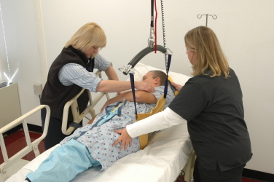
Leading through Research
Looking for more in-depth information? Atlas has some of the largest databases in the world. We mine our data to research systematic causes of risk and injury, and verify effective solutions. After we do so, we write white papers to help our clients and the industry succeed.
The relationships between onsite early intervention programs, employee age, and injury rates of manufacturing companies are examined with 18 manufacturing clients over 55 individual sites.
Read MoreAccurate and current physical demands descriptions support both the hiring and return to work processes within an organization and maintains compliance with several legal standards.
Read MoreHow well do we understand how biometric screening and coaching can impact driver health within the transportation industry?
Read MoreNew research shows health risks associated within the transportation industry workforce.
Read MoreExploring the relationship between material handling demographics and discomfort of over 102,000 truck drivers.
Read MoreExploring the relationship between the demographics and discomfort of over 102,000 truck drivers.
Read MoreExploring the relationship between ergonomics attitude, knowledge, and discomfort of over 26,000 employees
Read MoreExploring the relationship between products, training, and discomfort of over 26,000 office employees
Read MoreExploring the relationship between the demographics and discomfort of over 26,000 office employees
Read MoreA review of OSHA regulations related to Early Intervention injury prevention services and a discussion of results
Read MoreIn assessing the risk related to patient handling, knowledge and culture appear to be critical factors for success.
Read MoreA review of over 25000 driver surveys has revealed interesting trends on which drivers may be at greater risk.
Read MoreA two-year study by Atlas Ergonomics showed that systematic physical screenings of truck drivers prior to hiring led to a 7% reduction in lost work days
Read MoreIn an intensive five-month study, 90% of workers reported a preference for a completely split keyboard design
Read MoreA comparison of opinions on risk and discomfort in the office environment against data from over 2400 employees
Read MoreThis second paper in the series, focusing on the relationship between products, furniture, and work-related discomfort
Read MoreThis final paper in the series illustrates how improving attitudes, knowledge, and culture can help reduce discomfort
Read MoreA review of the current trends in obesity for the general population shows the need for a concerted effort
Read MoreErgonomic products vs. employee training: can a good office ergonomics program work without one of these elements? 1008 employees were evaluated for the study
Read More


















